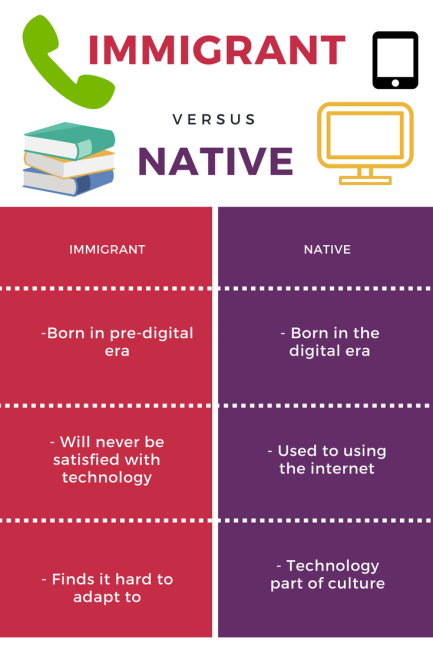Whilst writing my first post, I realised it was going to be difficult to create an effective, interesting and engaging piece of work but I soon realised this would be easier to achieve with the use of infographics and Youtube videos.
Through researching into digital migrants and residents I feel like I have been able to think about the world wide web from a new perspective. Before reading about this topic I assumed that I would completely be in the native category as I usually have these tendencies, however, after reading Carl’s comment on my post I realised that rather than seeing migrants and natives as two categories it could be more useful to see this as a spectrum instead.
I am glad that we are given the opportunity to read others post as I believe this helped me understand the topic even further and it was interesting to hear other peoples thoughts. After reading Lakshay’s post I realised that it is possible for some people to still not fully categorise as a digital resident but may be inclined to transition towards one because of the use of internet around them, I found this point really interesting.
To conclude, the first topic has taught me many skills I did not previously have, I have learnt how to create my own blog, write blog posts, create infographics and view other people’s blog. I believe this is a great way of learning. My views about this topic has also changed after researching it in more detail. I have been able to develop my understanding of the topic be seeing other peoples views and I have realised that there is not just two categories in which all people will fit and it may be a good idea to consider a spectrum rather than these two clear cut categories.

